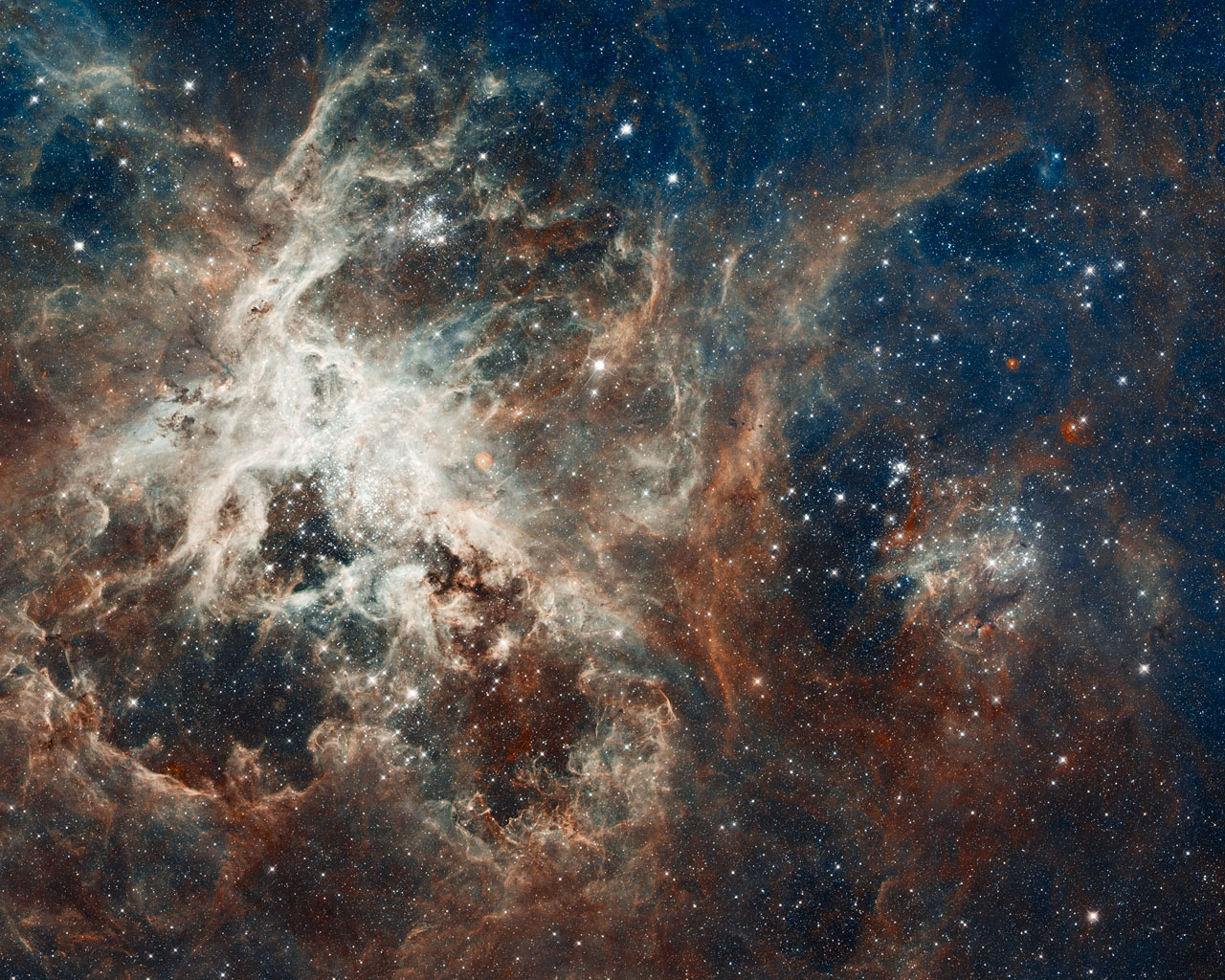ESA/HEIC Hubble Photo Release | 2011 Apr 17
Several million stars are vying for attention in this NASA/ESA Hubble Space Telescope image of a raucous stellar breeding ground in 30 Doradus, located in the heart of the Tarantula nebula.
30 Doradus is the brightest star-forming region in our galactic neighbourhood and home to the most massive stars ever seen. The nebula resides 170 000 light-years away in the Large Magellanic Cloud, a small, satellite galaxy of our Milky Way. No known star-forming region in our galaxy is as large or as prolific as 30 Doradus.
The image comprises one of the largest mosaics ever assembled from Hubble photos and consists of observations taken by Hubble’s Wide Field Camera 3 and Advanced Camera for Surveys, combined with observations from the European Southern Observatory’s MPG/ESO 2.2-metre telescope that trace the location of glowing hydrogen and oxygen.
The image is being released to celebrate Hubble’s 22nd anniversary.
The stars in this image add up to a total mass millions of times bigger than that of our Sun. The image is roughly 650 light-years across and contains some rambunctious stars, from one of the fastest rotating stars to the speediest and most massive runaway star.
The nebula is close enough to Earth that Hubble can resolve individual stars, giving astronomers important information about the stars’ birth and evolution. Many small galaxies have more spectacular starbursts, but the Large Magellanic Cloud’s 30 Doradus is one of the only star-forming regions that astronomers can study in detail. The star-birthing frenzy in 30 Doradus may be partly fueled by its close proximity to its companion galaxy, the Small Magellanic Cloud.
The image reveals the stages of star birth, from embryonic stars a few thousand years old still wrapped in dark cocoons of dust and gas to behemoths that die young in supernova explosions. 30 Doradus is a star-forming factory, churning out stars at a furious pace over millions of years. The Hubble image shows star clusters of various ages, from about 2 million to about 25 million years old.
The region’s sparkling centerpiece is a giant, young star cluster named NGC 2070, only 2 million to 3 million years old. Its stellar inhabitants number roughly 500 000. The cluster is a hotbed for young, massive stars. Its dense core, known as RMC 136, is packed with some of the heftiest stars found in the nearby Universe, weighing more than 100 times the mass of our Sun.
The massive stars are carving deep cavities in the surrounding material by unleashing a torrent of ultraviolet light, which is etching away the enveloping hydrogen gas cloud in which the stars were born. The image reveals a fantasy landscape of pillars, ridges, and valleys. Besides sculpting the gaseous terrain, the brilliant stars also may be triggering a successive generation of offspring.
When the radiation hits dense walls of gas, it creates shocks, which may be generating a new wave of star birth.
The colours come from the glowing hot gas that dominates regions of the image. Red signifies hydrogen gas and blue, oxygen.
The image was made from 30 separate fields, 15 from each camera. Hubble made the observations in October 2011. Both cameras were making observations at the same time.
Image credit: NASA, ESA, D. Lennon and E. Sabbi (ESA/STScI), J. Anderson, S. E. de Mink, R. van der Marel, T. Sohn, and N. Walborn (STScI), N. Bastian (Excellence Cluster, Munich), L. Bedin (INAF, Padua), E. Bressert (ESO), P. Crowther (Sheffield), A. de Koter (Amsterdam), C. Evans (UKATC/STFC, Edinburgh), A. Herrero (IAC, Tenerife), N. Langer (AifA, Bonn), I. Platais (JHU) and H. Sana (Amsterdam)



